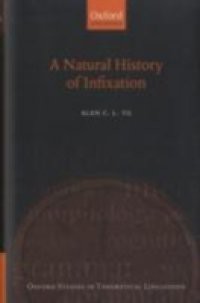This book presents the first cross-linguistic study of the phenomenon of infixation, typically associated in English with words like "im-bloody-possible", and found in all the world's major linguistic families. Infixation is a central puzzle in prosodic morphology: Professor Yu explores its prosodic, phonological, and morphological characteristics, considers its diverse functions, and formulates a general theory to explain the rules and constraints by which it isgoverned. He examines 154 infixation patterns from over a hundred languages, including examples from Asia, Europe, Africa, New Guinea, and South America. He compares the formal properties of different kinds of infix, explores the range of diachronic pathways that lead to them, and considers theprocesses by which they are acquired in first language learning. A central argument of the book concerns the idea that the typological tendencies of language may be traced back to its origins and to the mechanisms of language transmission. The book thus combines the history of infixation with an exploration of the role diachronic and functional factors play in synchronic argumentation: it is an exemplary instance of the holistic approach to linguistic explanation. Alan Yu's pioneering study will interest phonologists and morphologists of all theoretical persuasions, as well as typologists and historical linguists.

